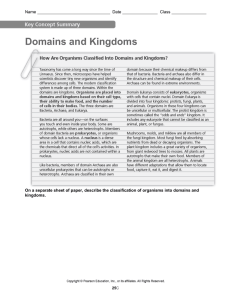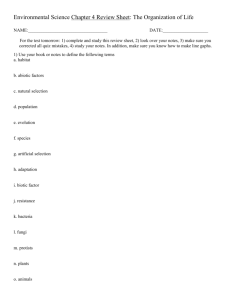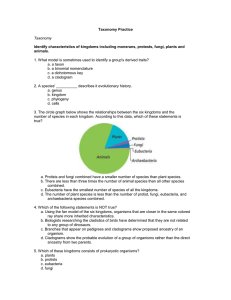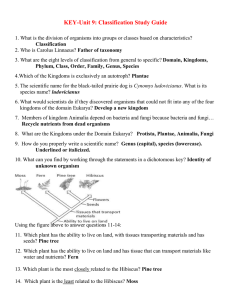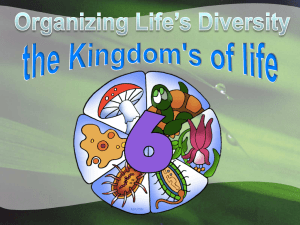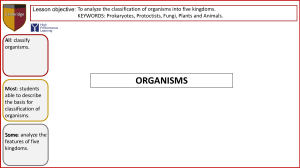The Core Theme Organizing the Diversity of Life
advertisement
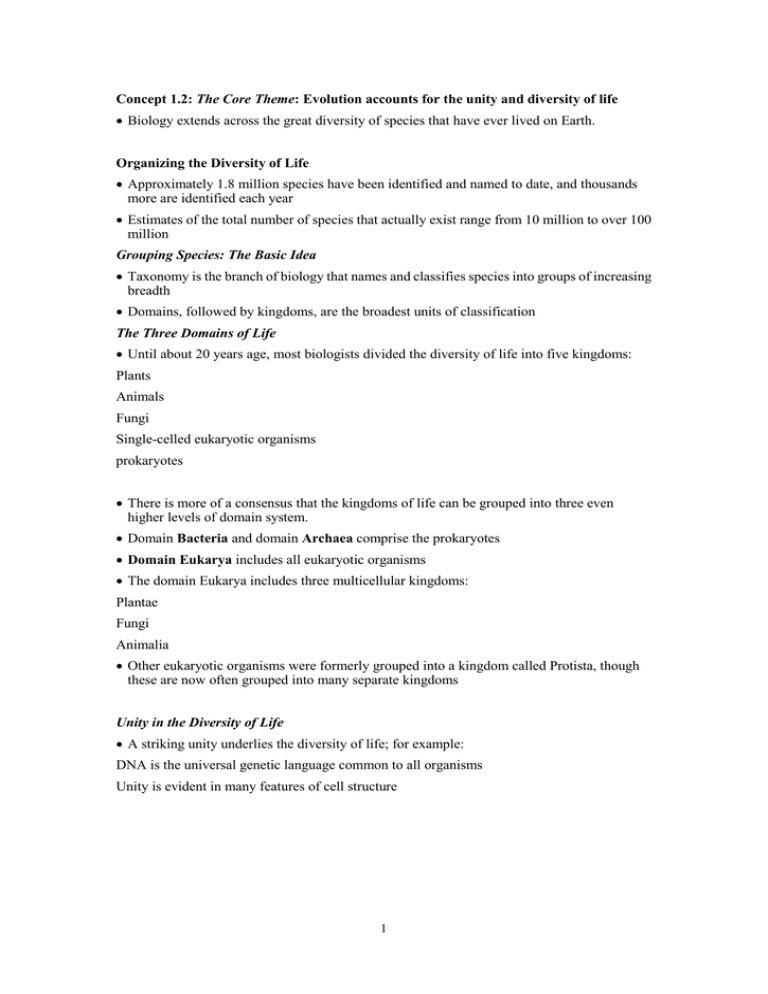
Concept 1.2: The Core Theme: Evolution accounts for the unity and diversity of life Biology extends across the great diversity of species that have ever lived on Earth. Organizing the Diversity of Life Approximately 1.8 million species have been identified and named to date, and thousands more are identified each year Estimates of the total number of species that actually exist range from 10 million to over 100 million Grouping Species: The Basic Idea Taxonomy is the branch of biology that names and classifies species into groups of increasing breadth Domains, followed by kingdoms, are the broadest units of classification The Three Domains of Life Until about 20 years age, most biologists divided the diversity of life into five kingdoms: Plants Animals Fungi Single-celled eukaryotic organisms prokaryotes There is more of a consensus that the kingdoms of life can be grouped into three even higher levels of domain system. Domain Bacteria and domain Archaea comprise the prokaryotes Domain Eukarya includes all eukaryotic organisms The domain Eukarya includes three multicellular kingdoms: Plantae Fungi Animalia Other eukaryotic organisms were formerly grouped into a kingdom called Protista, though these are now often grouped into many separate kingdoms Unity in the Diversity of Life A striking unity underlies the diversity of life; for example: DNA is the universal genetic language common to all organisms Unity is evident in many features of cell structure 1
